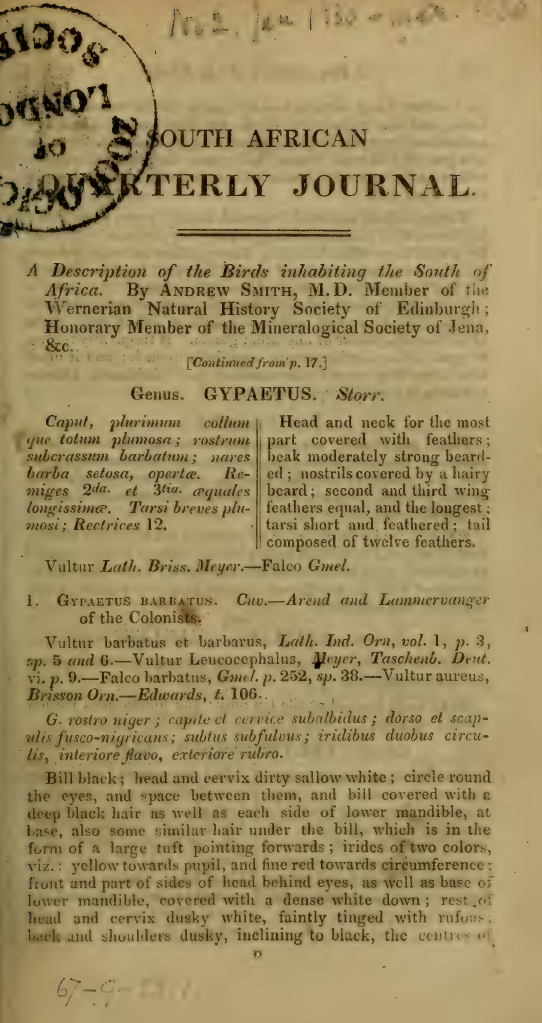Description of the birds inhabiting the South of Africa
DOI:
https://doi.org/10.21504/saqj.12.2624Keywords:
Ornithology, Dr. Andrew Smith, South African birds, 19th-Century Natural History, Natural History of South Africa, Vultures, TaxonomyAbstract
This article is the second of a series, with the first part available here: https://doi.org/10.21504/saqj.11.2612
This excerpt, part of "A Description of the birds inhabiting the South of Africa" by Dr Andrew Smith, continues the systematic classification of African avifauna, focusing on diurnal birds of prey (Accipitridae family). It provides detailed Latin and English/Dutch descriptions, synonymy, and observations for several genera and species. Detailed morphological and plumage characteristics are given for the GYPAETUS genus, specifically Gypaëtus aegypius (the Arend or Lammervanger), describing both adult and juvenile colouration. The text then transitions to the AQUILINA (Eagles) stirps, detailing three new genera proposed by the author: POLYBOROIDES (with species P. typicus, the "Gymnogene"), HALIAETUS (Sea-Eagle, or Groote Vischvanger), and CIRCEETUS (Snake-Eagle, or Spizaetus), followed by known species in the genera AQUILA (e.g., A. bellicosa, A. vulturina, A. choka) and MORPHNUS (e.g., M. albescens, M. occipitalis). For each species, Smith notes habitat, diet (carrion, antelope, Dassie/Hyrax), nesting habits, distribution within the colony, and discrepancies or confirmations regarding previous ornithological accounts, such as those by Le Vaillant.
Downloads

